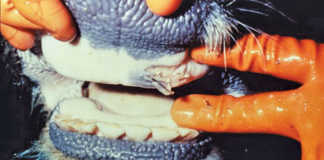Urban farming in the New York City area was hard hit, however, with garden projects under more than a metre of seawater. The crops were a total loss because of water pollution. It was also reported that a million bees at the Brooklyn Grange’s Navy Yard urban farming project were lost when the storm destroyed 25 hives on a pier. Dairy farmers in New York, Vermont, Pennsylvania and Virginia reported power, phone lines and trees down, as well as damaged buildings, but no major structural harm to their operations.
Cotton and soya bean crops appeared to have suffered little damage, with farmers saying they just needed to wait for the crops to dry out before continuing to harvest. The sector was helped by the fact that 91% of the maize crop had already been harvested, compared to 74% at the same time last year. Some 87% of the soya bean crop, meanwhile, had been harvested, compared to 85% last year.
It’s estimated that about 1,6 million hectares of maize is still to be harvested in Indiana, Michigan, Ohio and Pennsylvania.
The Dairylea Co-op, which marketed milk for more than 2 000 dairy farmers throughout the US north-east, said there had been minimum impact on its members. The co-op had about 200 loads of milk turned back by blocked roads, but used its plant network to divert the milk elsewhere.
The 1 500-farmer Maryland and Virginia Milk Producers Co-op said its five plants were operating, but it expected difficulties in getting milk from the farms because of downed trees and flooded roads. Farm Service Agency (FSA) administrator, Juan Garcia urged farmers and ranchers affected by Sandy to keep thorough records of all losses. The FSA has R134,2 million available immediately to assist producers after a catastrophe.
In Cuba, meanwhile, up to 30% of the country’s coffee farms were destroyed by Sandy. Analysts estimated the coffee harvest – at less than 4 000t – would be the lowest in a century. In the Bahamas farmers lost banana, cassava, tomato and watermelon crops. The second ‘one in a hundred years’ storm came just 14 months after Hurricane Irene, which forced some politicians, including New York City mayor Michael Bloomberg and state governor Andrew Cuomo, to consider preparing Manhattan and other areas for more extreme weather. Levees, storm surge barriers and other preventative measures were now being planned.











